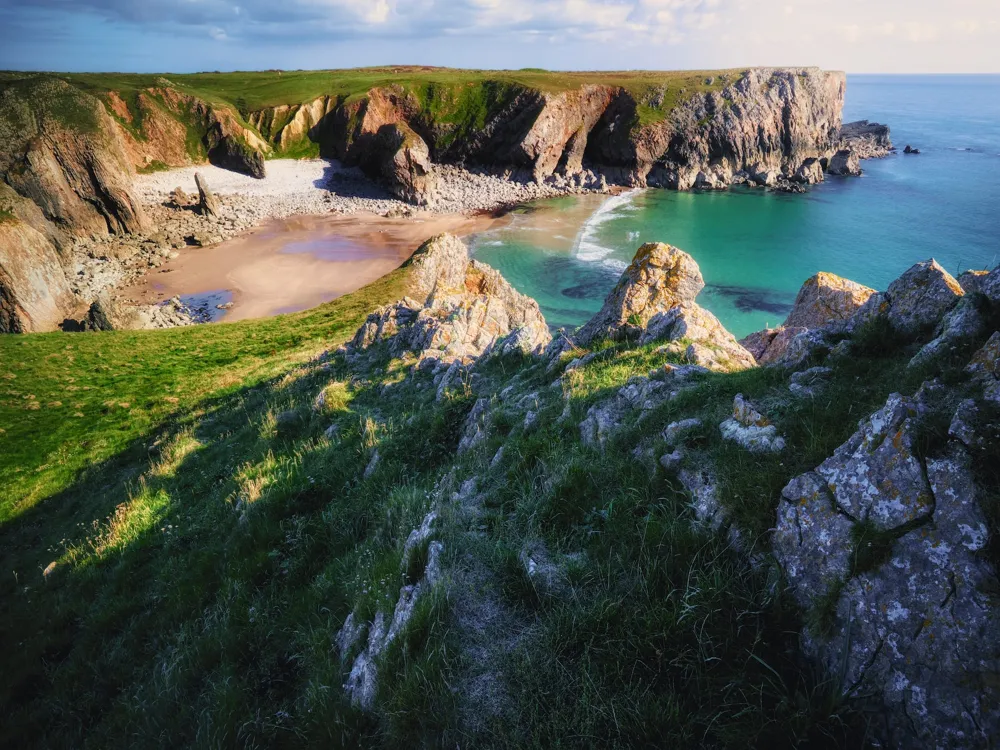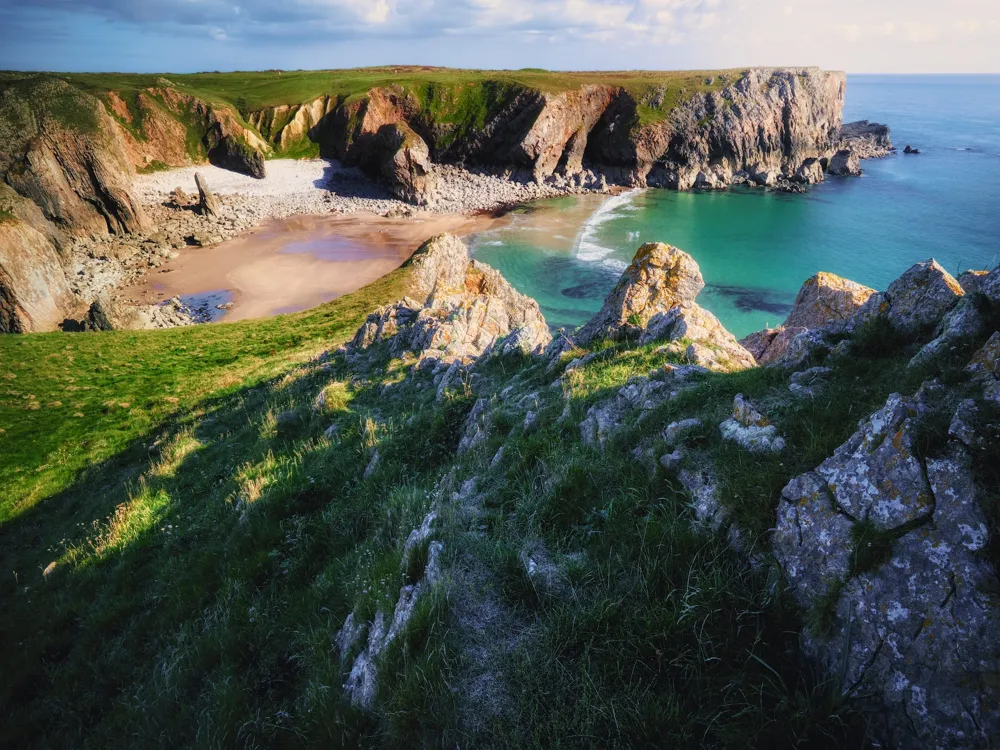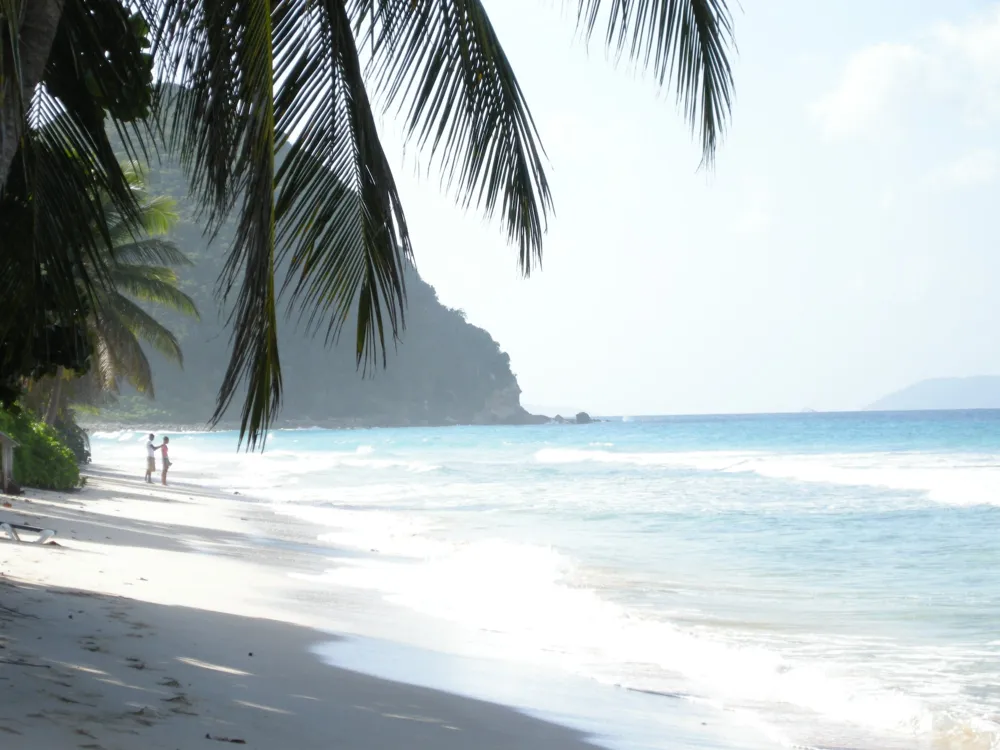Halong Bay, a UNESCO World Heritage Site located in Quang Ninh Province of Vietnam, is a magnificent destination that captivates visitors with its surreal natural beauty. This bay, famous for its emerald waters and thousands of towering limestone islands topped with rainforests, spans an area of around 1,553 square kilometers. Each island and islet in the bay is unique, with many being hollow and housing enormous caves. The name 'Halong' translates to 'where the dragon descends into the sea', a nod to the local legend that credits the creation of the bay to a great dragon from the mountains. As a key tourist destination in Vietnam, Halong Bay is not only a place of natural beauty but also a testament to the region's geological and historical evolution over thousands of years. Geologically, Halong Bay is the result of various transformations over 500 million years, witnessing multiple climate changes and environments. The diverse ecological system, including tropical evergreen bio-system, oceanic and seashore bio-system, makes it a natural habitat for many species of plants and animals. This unique environment has created a biological diversity unseen elsewhere in the world. The limestone karsts, some as old as 20 million years, jut dramatically from the sea, sculpted into various shapes by the wind and water over millennia. These karsts are home to several endemic species of flora and fauna. Not just a natural wonder, Halong Bay is also a place steeped in history. The bay has been home to various cultures dating back as far as 18,000 years ago. Archaeological sites around the bay, including cave paintings and ceramics, offer a glimpse into the life of ancient peoples. More recently, Halong Bay played a key role in Vietnam's history with its waters witnessing important naval battles. The bay's stunning scenery and historical significance make it a place where nature and culture intertwine beautifully. The beauty of Halong Bay is not confined to its landscape. The local culture, shaped by the various communities that have lived in and around the bay, is rich and vibrant. The floating fishing villages, with houses built on rafts and boats, are a unique feature of the bay, showcasing a way of life adapted to the watery world. These villages, like Cua Van and Vung Vieng, are not just homes but also centers of culture and tradition, with customs and practices passed down through generations. Halong Bay's architecture is as captivating as its natural beauty, offering a blend of traditional Vietnamese styles and influences from various historical periods. The architecture here is not about grand buildings or monuments, but rather the unique and sustainable way of life that has been adapted to the maritime environment. The most notable architectural features in Halong Bay are the floating villages and houses, which have been ingeniously designed to withstand the bay's conditions. The floating houses, typically made from wood and bamboo, are a marvel of vernacular architecture. They are anchored to the seabed and can withstand strong winds and waves. These houses are built with a deep understanding of the local environment and materials, reflecting the residents' connection to the bay. Each house is not just a dwelling but a self-contained unit, with space for living, fishing, and even small-scale aquaculture. This architecture represents a harmonious coexistence with nature, where the design is driven by practicality and sustainability. Apart from the floating houses, the architecture of Halong Bay is also evident in the traditional junks and boats used by the locals. These vessels, with their distinctive sails and wooden hulls, are a product of centuries of maritime tradition. The design of these boats is adapted to navigate the waters of the bay efficiently and safely, showcasing the ingenuity of local boat builders. The boats are often decorated with intricate carvings and bright colors, reflecting the vibrant culture of the bay. The bay's architecture extends to its islands and caves. The limestone islands are natural sculptures, having been shaped by the elements over millions of years. Caves like Sung Sot (Surprise Cave), Thien Cung (Heavenly Palace Cave), and Dau Go (Wooden Stakes Cave) are not just natural wonders but also sites of historical and cultural importance. Inside these caves, one can find stalactites and stalagmites formed over millennia, creating otherworldly landscapes. These caves often contain ancient inscriptions, evidence of human interaction with these natural wonders. In addition to these, the architecture of the bay is complemented by the small temples and pagodas scattered throughout the area. These religious structures, often situated in dramatic locations, add a spiritual dimension to the bay's landscape. The architecture of these temples blends with the natural environment, creating serene spaces for reflection and worship. The most notable among these is the Tran Quoc Pagoda, which stands on a small island in West Lake. This pagoda, with its elegant architecture and peaceful setting, is a testament to the spiritual history of the region. The best time to visit Halong Bay is from October to April, when the weather is cool and dry. This period offers the most comfortable conditions for cruising and exploring the bay. The summer months from May to September are warmer and prone to tropical storms. Selecting the right cruise is crucial for your Halong Bay experience. Consider factors like the duration of the cruise, the route, and the size of the boat. Smaller boats offer a more intimate experience, while larger ones have more amenities. Check reviews and safety records before booking. For a comfortable trip, pack light but smart. Essential items include swimwear, sun protection, comfortable footwear for walking and hiking, a camera, and a light jacket for cooler evenings. Remember to bring any necessary medications. While visiting Halong Bay, it's important to respect the local culture and traditions. Dress modestly when visiting temples and pagodas, and ask for permission before taking photos of local people. Be mindful of the environment and avoid littering. While cruising is a major attraction, Halong Bay offers much more. Take time to explore the caves, hike on the islands, visit the floating villages, and try local cuisine. Kayaking is a great way to see the bay up close and explore smaller inlets. Halong Bay is accessible by various means of transportation, making it a convenient destination for travelers. The nearest major city is Hanoi, approximately 170 kilometers away. From Hanoi, you can reach Halong Bay by bus, private car, or shuttle van. The journey typically takes about 3-4 hours. Another option is to take a seaplane from Hanoi, which offers a spectacular aerial view of the bay and reduces travel time significantly. For those coming from other regions, the newly opened Van Don International Airport, about 50 kilometers from Halong Bay, provides a closer alternative to Hanoi's Noi Bai International Airport. Taxis and shuttle services are available from the airport to the bay.Overview of Halong Bay
Architecture of Halong Bay
Tips When Visiting Halong Bay
Best Time to Visit
Choosing a Cruise
Packing Essentials
Respecting Local Culture
Exploring Beyond the Boat
How To Reach Halong Bay
Virgin Cave
Halong Bay
₹ 15,260 onwards
View halong-bay Packages
Halong-bay Travel Packages
View All Packages For Halong-bay
Top Hotel Collections for Halong-bay

Private Pool

Luxury Hotels

5-Star Hotels

Pet Friendly
Top Hotels Near Halong-bay
Other Top Ranking Places In Halong-bay
View All Places To Visit In halong-bay
View halong-bay Packages
Halong-bay Travel Packages
View All Packages For Halong-bay
Top Hotel Collections for Halong-bay

Private Pool

Luxury Hotels

5-Star Hotels

Pet Friendly






















